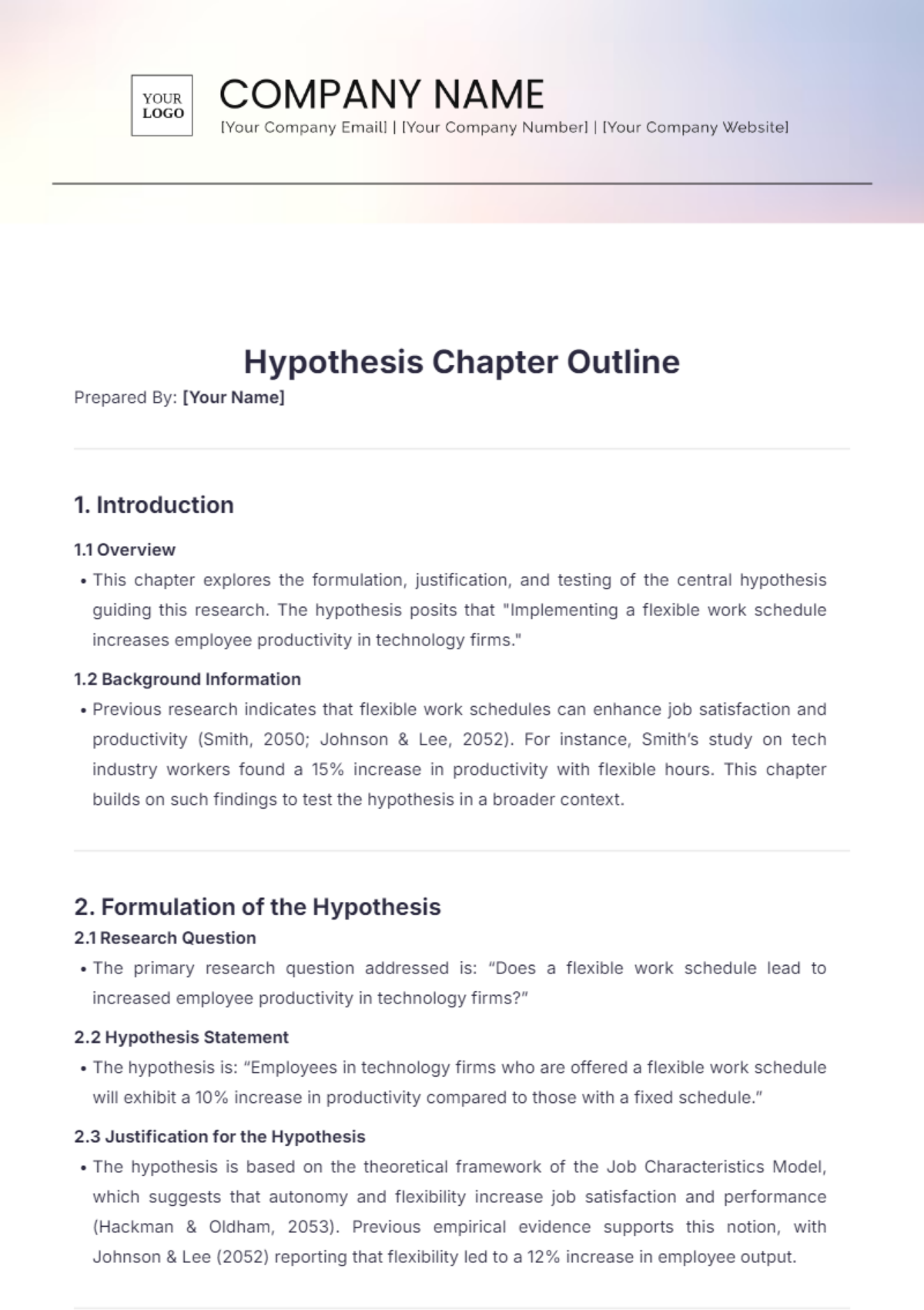Data Collection Chapter Outline
Prepared By: [YOUR NAME]
Date: [DATE]
I. Introduction
A. Purpose of Data Collection
The primary aim of data collection in this research is to gather relevant information to address the research question: "What are the effects of urban green spaces on community health?" This involves collecting data to understand how green spaces influence physical and mental health, identify factors that enhance or limit these effects, and evaluate community perceptions of green space benefits.
B. Research Context
Urban green spaces have gained prominence as a key component in city planning due to their potential impact on health and well-being. This research seeks to assess the effects of green spaces in metropolitan areas, where the integration of parks and green areas has been a growing focus.
II. Research Questions/Hypotheses
A. Research Questions
In what ways do urban green spaces influence the physical health outcomes experienced by residents living within the community?
Could you explain how urban green spaces influence mental well-being and levels of stress in individuals?
In what ways do the individuals who live in this community understand and evaluate the importance and availability of green spaces within their area?
B. Hypotheses
Residents living near urban green spaces experience better physical health outcomes compared to those who do not have access to such areas.
Having access to green spaces located within urban areas is linked to experiencing reduced levels of stress as well as an enhancement in overall mental well-being.
People tend to use green spaces more frequently when they have a positive perception of them, and this positive view is also associated with various reported health benefits for those who spend time in these areas.
III. Data Collection Methods
A. Methodology Overview
This study will use a mixed-methods approach, combining quantitative surveys and qualitative interviews to gain a comprehensive understanding of the effects of urban green spaces on health.
B. Detailed Methods
Surveys: A structured online questionnaire will be used to collect quantitative data on physical health indicators, mental well-being, and perceptions of green spaces. The survey will feature Likert-scale questions and multiple-choice questions.
Interviews: Semi-structured interviews will be conducted with a subset of survey participants to explore personal experiences and detailed views on the impact of green spaces.
C. Rationale
Combining surveys and interviews within the research methodology enables a thorough approach that supports extensive quantitative analysis while also providing deep qualitative insights, allowing researchers to tackle research questions from multiple angles and enhancing the study with diverse numerical and detailed information.
IV. Sampling Procedures
A. Target Population
The group of individuals that we aim to focus on encompasses those who reside in city environments and have access to parks, community gardens, forests, or any other types of green spaces within their urban locality.
B. Sampling Technique
Surveys: Stratified random sampling will be used to select participants from different neighborhoods with varying levels of green space access.
Interviews: Purposeful sampling will be used to select interviewees from survey respondents who have indicated strong opinions or noticeable health impacts related to green spaces.
C. Sample Size
Surveys: We will aim to include a total of 600 participants in our study. By doing so, we hope to gather robust data that will provide sufficient statistical significance for our analyses.
Interviews: A group consisting of between fifteen and twenty participants will be chosen to take part in interviews. These interviews aim to gather detailed and comprehensive qualitative data from the selected individuals.
V. Data Collection Tools
A. Instruments
Surveys: The survey will consist of 25 questions designed to assess physical health, mental well-being, and perceptions of green spaces. Tools such as Qualtrics or SurveyMonkey will be used to administer the survey.
Interviews: An interview guide with open-ended questions will be developed to explore participants' experiences and views in depth. Interviews will be conducted using video conferencing tools like Microsoft Teams.
B. Development and Validation
The survey will be pilot-tested with a small group to ensure clarity and effectiveness. The interview guide will be reviewed by subject matter experts to ensure comprehensive coverage of the research topic.
VI. Data Collection Process
A. Procedure
Surveys: Invitations will be sent via email or through community platforms, including a link to the online survey. Follow-up reminders will be sent to increase response rates. Data collection will span four weeks.
Interviews: Interview scheduling will be coordinated via email, with each session lasting about 45 minutes. Interviews will be recorded (with consent) and transcribed for analysis.
B. Timeline
Activity | Timeline |
|---|---|
Survey Collection | Weeks 1-4 |
Interview Scheduling and Conducting | Weeks 5-6 |
C. Responsibilities
The research team will be composed of a project manager for administrative oversight, a data analyst for survey data processing and interpretation, and an interview specialist for conducting and transcribing interviews.
VII. Ethical Considerations
Informed Consent: Participants will receive detailed information about the study’s objectives, procedures, and their rights before providing electronic consent.
Confidentiality: Data will be anonymized, and personal identifiers will be removed from the dataset. Access to data will be restricted to the research team.
Ethical Approval: The research proposal will be reviewed and approved by the institutional review board (IRB) to ensure compliance with ethical research standards.
VIII. Data Management
Storage: Data will be stored securely on encrypted servers, with regular backups. Any physical documents will be kept in locked storage.
Organization: Data will be organized using a coding system for easy retrieval. Survey responses will be categorized by demographics and health indicators, while interview transcripts will be indexed by themes.
Data Protection: Access to data will be secured with strong passwords and encryption to protect against unauthorized access.
IX. Challenges and Limitations
A. Potential Challenges
Low Survey Response Rates: To address potential low response rates, additional reminders and incentives may be offered.
Subjectivity in Perceptions: To minimize bias, questions will be designed to elicit objective responses where possible, and multiple data sources will be used.
B. Limitations
Sampling Bias: The sample may not fully represent all urban areas or demographics. This limitation will be acknowledged and addressed in the research discussion.
Generalizability: Findings may be specific to the urban areas studied and may not apply universally to all cities or regions.
X. Conclusion
Summary: This chapter outlines the comprehensive plan for data collection to explore the effects of urban green spaces on community health. It includes methods, sampling procedures, tools, and ethical considerations, along with data management strategies.
Relevance: A well-structured data collection plan is essential for obtaining reliable and insightful results, contributing valuable information on the impact of urban green spaces on health and well-being.

















































